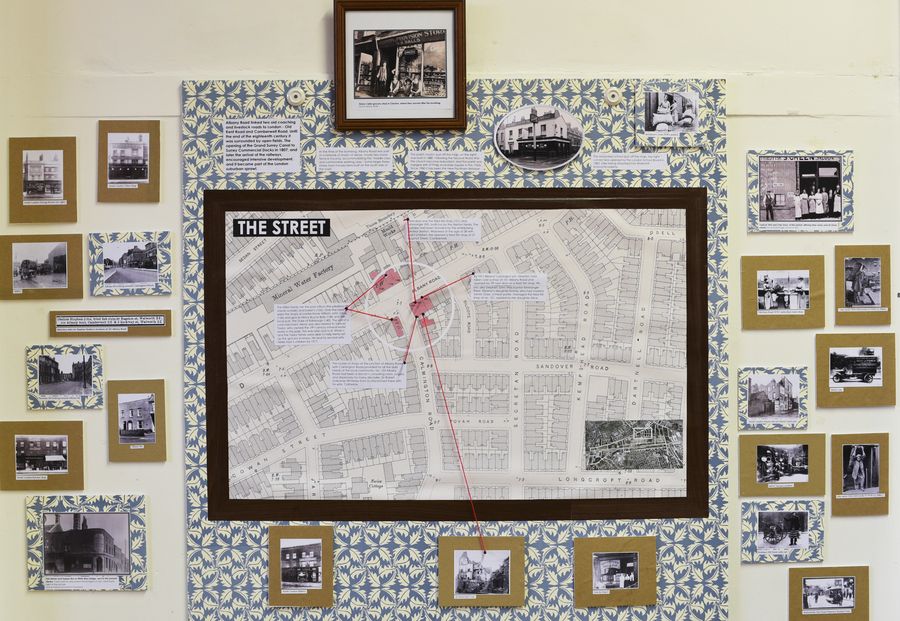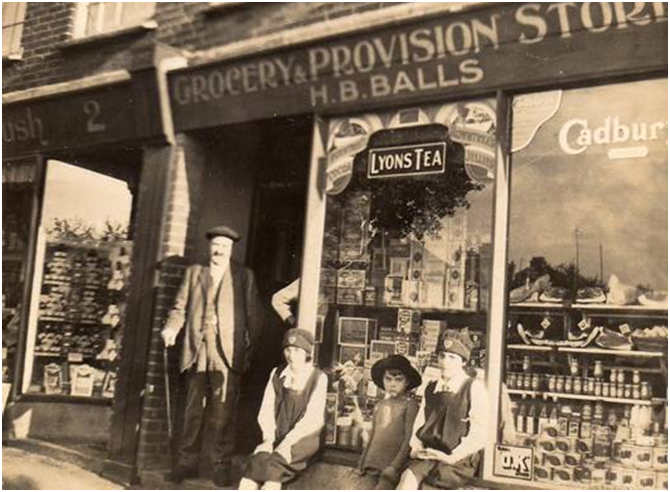Albany Road linked two old coaching and livestock roads to London – Old Kent Road and Camberwell Road. Calmington Road, at its junction with Albany Road at the north end, formed part of a tightly knit community of streets with shops, houses, churches and schools, which had developed towards the end of the 19th century, in the area now forming Burgess Park.

Houses
At the time of the bombing, Albany Road was part of a network of streets of dense, mostly two-storey terrace housing, accommodating the ‘middle class and comfortable working class’. Some larger three-storey town houses were built on the south side of the road.
St Mark’s Church
The parish church (just off the map, on the right) was built in 1880. Following the Second World War the church became redundant, and the parish was merged with St Philip Avondale Square in the 1960s. Since 1980 it has been the New Peckham Mosque.
Mina Road Board School
The secondary school (just off the map above, top right corner) was opened by the London School Board in 1882, later being absorbed into Walworth School/Academy.
Cobourg Road Board School
The primary school (just off the map, on Brymer Rd, on the right) was opened by the London School Board on 8 June 1887, and still operates today.

The cluster of shops at the junction of Albany Road with Calmington Road provided for all the daily needs of the local community. No. 103 Albany Road had been a doctor’s consulting room, surgery and dispensary for many decades. In 1917, Dr Robert Galloway Whitelaw from Scotland lived there with his wife, Catherine.
Next door was the fried fish shop (101) and fishmonger (99), both run by the Skelton family. The business had been founded by the enterprising Eleanor Skelton. Widowed at the age of 38 with eight children, she opened a fried fish shop at 27 Bagshot Street, Camberwell.
By 1911 Eleanor’s youngest son, Stephen, had taken over a shop at 101 Albany Road and opened no. 99 next door as a fresh fish shop. His son, also Stephen John, was a junior fishmonger there. Eleanor’s daughter Emma, who had married James Glass, a meat porter, managed the fried fish shop at no. 101, assisted by her daughter Alice.

The Miller family ran the post office (the pillarbox still stands outside) and baker’s (105).
Over on the north side of Albany Road were the shops of confectioner William John Jarvis (136) and grocer Henry Boyce Balls (138) and the local pub, the Duke of Edinburgh (140). The son of a coal merchant, Henry was also related to Samuel Taylor, who owned the 19th century mineral water works in the park. This was later sold to R. White’s, and the Taylor family were able to help Henry set up the grocery business. He and his second wife Nellie had 5 children by 1917.

